Image
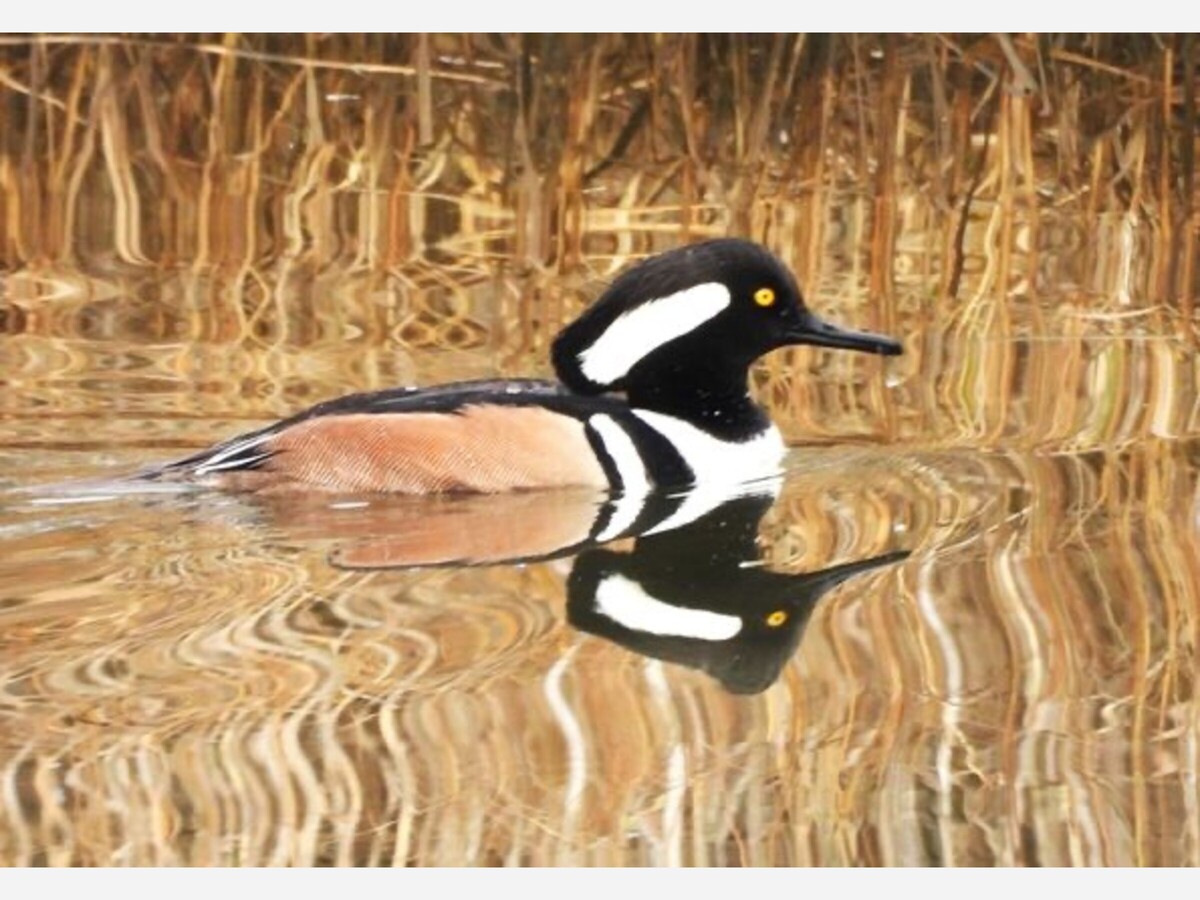
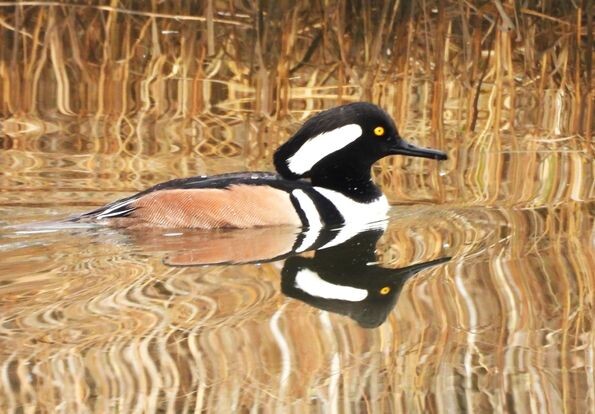
Late fall and winter are when most ducks return to this region. They can be seen in large numbers on more expansive bodies of water, and in lesser numbers on small lakes and ponds and waterways like the Manatawny Creek. From afar, ducks generally look like brown specks, but, close up, they can be colorful and striking.

Hooded mergansers are fairly common local ducks. They can be found in limited groups on small lakes and rivers, and in marshes. The males are easily identifiable by their enlarged head crests with conspicuous white circular marking. The female hooded mergansers have more plain grayish brown bodies with a funky brown reddish crest. She often looks like she is showing off her latest beauty salon hairdo. Mergansers can raise and lower their crests, sometimes making them tougher to identify in the field.

There are three species of mergansers in our region. Mergansers are the only ducks that feed primarily on fish. Hooded mergansers will dive underwater and chase after its fish prey using visual cues. They also feast on underwater insects and crabs. They can change the refractive properties of their eyes while underwater for better vision, and possess an extra eyelid that acts as a pair of goggles. They can remain underwater for up to two minutes. Mergansers consume their prey once they emerge from underwater - always swallowing them head-first to avoid injury from spiny fins.
Female hooded mergansers seek out nesting cavities, often in dead trees not far from water. The cavities are usually 15 to 50 feet above the ground. She lays fairly large clutches of eggs, usually between 7 and 15 at a time. The largest clutch ever found was 44 eggs. She will sometimes lay her eggs in the nests of other ducks.
Female hooded mergansers only begin incubation when the last egg is laid, so that all eggs hatch together. Within 24 hours of hatching, she will fly to the ground and call the ducklings out of the nest. One by one, they will throw themselves from their nest to the ground below and follow the mother to the water, where they will be safer. The ducklings often bob around the water very close together so that they resemble from overhead a swimming muskrat. This keeps them safe from sharp-shinned hawks that are often cruising for lunch overhead.
In Pennsylvania, look for hooded mergansers in winter in smaller water bodies, marshes, streams, etc. If you are lucky, you will see their flamboyant mating dances, where the males puff their crests to full extension and dance about the water. They sometimes fully extend their necks and call and flex as they swim by onlooking females. Not much unlike behavior at junior high dances.
Here are some photographs of male hooded mergansers shaking it for the females. I took them at Centennial Lake Park, in Maryland. On this particular day, the females appeared to be very discriminating and uninterested in the males, but “the dance” will continue for weeks.
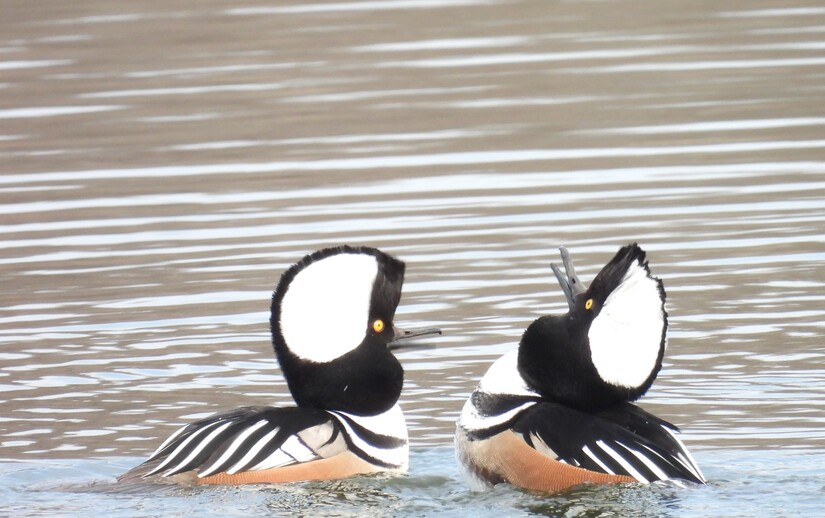
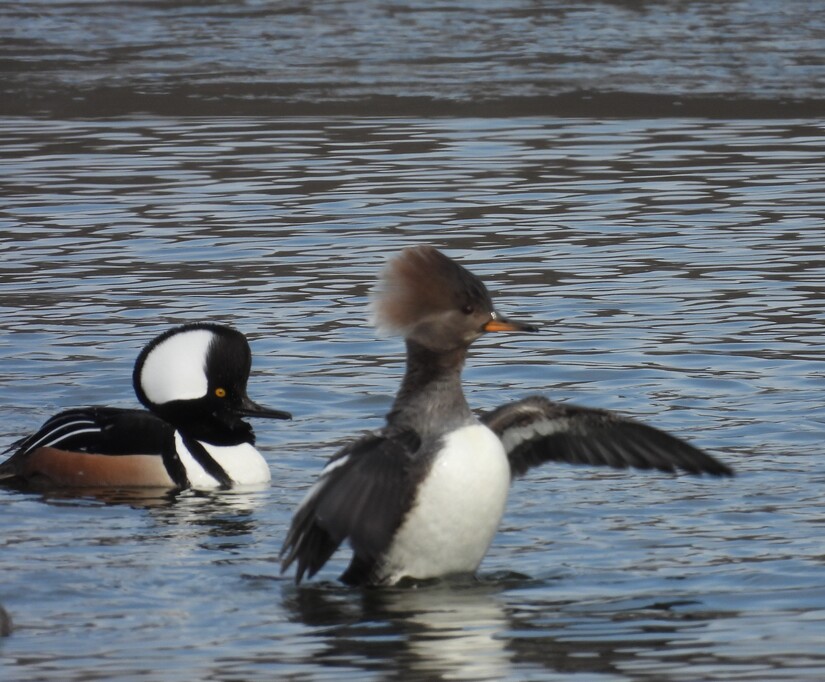
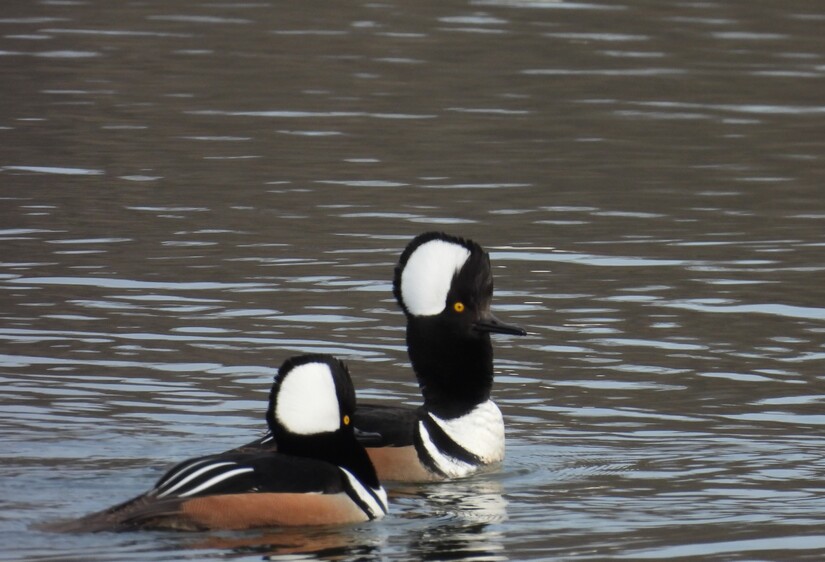

* Mike Strzelecki is a freelance travel and outdoor writer, and 1981 graduate of Boyertown Area Senior High School. He writes from his house in Baltimore, Maryland. In his spare time, he joins his wife on adventures around the country observing and photographing birds.